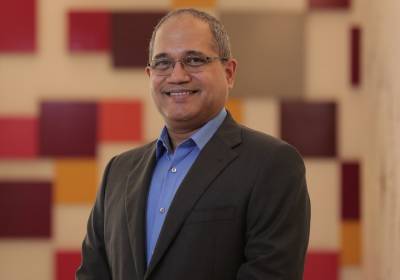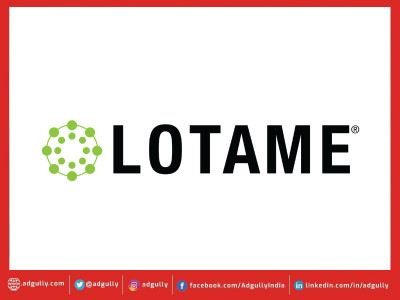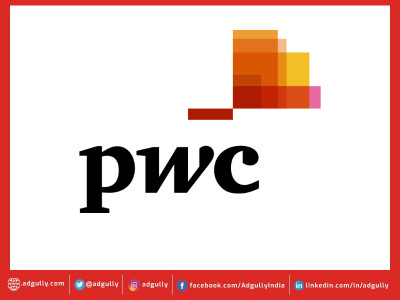Traditional media is still strongly placed in India: PwC’s Frank D’Souza
PwC has released its ‘Global Entertainment & Media Outlook 2018-2022’ report, which pegs the Indian Media and Entertainment to reach Rs 353,609 crore by 2022, growing at a compound annual growth rate (CAGR) of 11.6 per cent between 2018 and 2022.
PwC’s 19th annual edition of the ‘Global Entertainment & Media Outlook’ is a comprehensive online source of global analysis for consumer and advertising spending. With like-for-like, five-year historical and five-year forecast data and commentary for 15 defined industry segments in 53 territories, the Outlook makes it easy to compare and contrast consumer and advertising spending across segments and territories.
According to the report, despite piracy, India is set to move into the top ten largest OTT (over-the-top) video markets by 2022 with a growth rate of 22.6 per cent CAGR.
Social/ casual gaming is expected to grow at 55.9 per cent CAGR during the forecast period, reaching Rs 14,772 crore by 2022.
Data consumption in India set to grow as mobile connections are set to reach 850 million by 2022. The report also mentions that mobile video advertising is the fastest-growing sub-segment of India’s Internet advertising market, rising at 32.8 per cent CAGR to 2022, when revenue will total Rs 2,155 crore.
Commenting on the findings, Frank D’Souza, Partner & Leader - Entertainment & Media, PwC India, said, “It is not surprising that India continues to be one of the fastest growing entertainment and media markets globally. However, what is encouraging is how non-linear media is expected to grow on the back of increase in device penetration, lower Internet prices, consumer content demand and portability preferences. This will manifest in significant growth in OTT, e-sports and Internet advertising.”
In conversation with Adgully, Frank D’Souza speaks about the growth of digital media – mobile, Internet, OTT – in India and does some comparisons with the West.
You spoke about mobile advertising growing despite the use of ad-blockers. In your estimate, what is the percentage of mobile users who watch mobile ads?
Well, here is a dichotomy of an advertisement. They know as a matter of fact that there is empirical evidence that linear media is not getting as much attention as non-linear media is getting. We all are on our mobiles perpetually, so they have no option but to get in there and in a way hope for the best once it’s done. But on the other side, improvements have to be done and adequate measures need to be in place. I know there are companies working on how the measurements need to be in place – both in terms of length and period. The mere thing of clicks does not work anymore.
Internet advertising has the benefit of doing a ‘unicast’ as against a broadcast. If you know who is watching it, you can target your ad to the right audience and thus the chances of its effectiveness is higher than when you just broadcast an ad. This requires a significant investment in data analytics.
This brings us to another important point – the trust in the data being collated, reviewed and analysed. It’s important to know that the person reviewing it is indeed a person and not a bot. The trust part is very important for an advertiser who is putting in his spends. With more people moving away from traditional media, advertisers are doing more of mobile/ Internet advertising and are working towards making it more effective.
You spoke about self-regulation in media platforms, as most in the industry feel that the government must not interfere. How does one ensure self-regulation in the digital space?
It’s a tough one in terms of freedom of speech vis-a-vis regulation. Look at the Indian context, where television has programming code and advertising code. On the other hand, OTT platforms in India do not have a programming code. Now, moving in the other direction do we say that television should not have a programming code? We have to reach a conclusion on what it ought to be. Further, should the films and series aired on OTT platforms in India carry certifications from the Indian Censor Broad? OTT platforms globally are not regulated. But after some point of time they have to do it. Otherwise, regulations will come in and we have seen it happen in many other instances and they will eventually do it for their own benefit.
When the advertising industry set its own self-regulatory organisation, it ensured that the government stayed away from it and they did what was important at that point of time.
News organisations say that they have their own regulations, and yet fake news abound...
It’s always a debate between freedom of speech and censorship. Everyone has to find a meeting point to be able to say this is what we must do. And it has become very important to reach such a point, as seen in the case of the Facebook data breach. In the Indian context we are slightly behind and still have a long way to go.
What, according to you, are the key trends that will dominate the Indian M&E industry in the next five years?
Traditional media is still strongly placed and there remains room for growth. Cinema has a huge growth potential and I think we will become the third largest market in the world in cinema after China and the US, and we will overtake Japan maybe in a year or so.
But at the same time we are heavily under-screened. There is so much scope for improvement in theatre infrastructure. Globally, we see the studios that produce movies as well as companies like IMAX and Dolby who create the infrastructure, investing with the theatre owners on the assets that need to be deployed. In the Indian scenario, the number of digital screens are limited as we are still on analogue; we have single screens in most parts of the country. Thus, we face a significant infrastructure problem. As the infrastructure improves, so will cinema.
Cinema will never die in our country as it is a part of our culture and we like to consume it as a society, so we have a lot of factors that will contribute to its growth. On the other hand, in the West stories will sell only if they are part of a franchise or an Oscar-type storytelling.
While the media industry will definitely keep growing in India, we need to avoid being caught off-guard the way more mature economies have been caught off-guard due to the changes in consumption pattern. Such changes in consumption will also happen in India, but we can plan in advance and work towards it. As seen in the case of the West, whilst earlier everything was free for sharing, now they are struggling to get consumers to pay for what they consume. In India, we need to gradually nudge the consumers to get into the habit of paying for content from the beginning so that we are creating that monetisation ability in a far better way than what the other emerging markets have done. So, for around the next 15 years it is a good growth scenario for traditional and other media in India.
How do you view the growth of the OTT space in India?
If you look at the Indian context, in terms of absolute size OTT viewership stands at only 297 million, compared to Television’s 9,281 million. Even with the growth rate that you project on OTT, this difference will still continue. It will take a while for the scenario to change.

















Share
Facebook
YouTube
Tweet
Twitter
LinkedIn